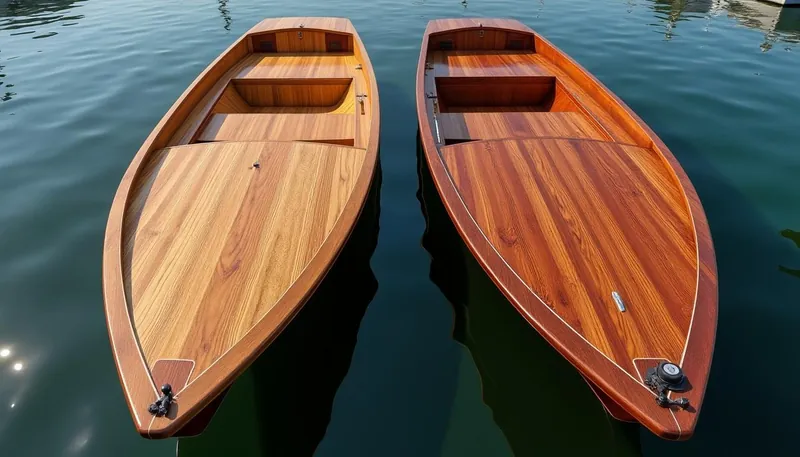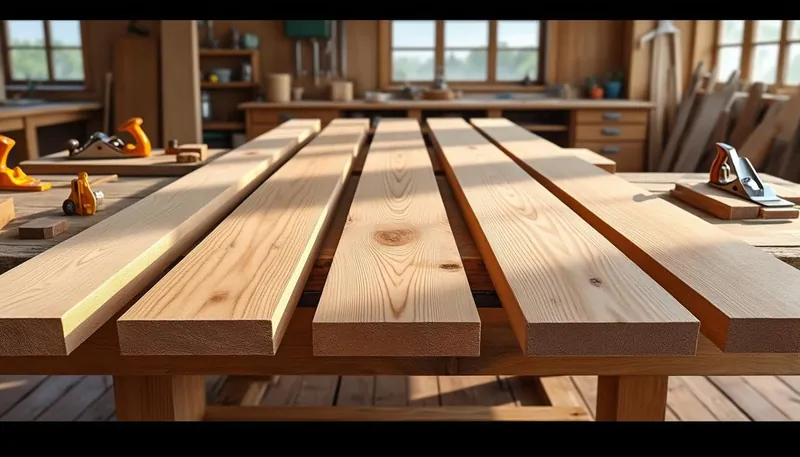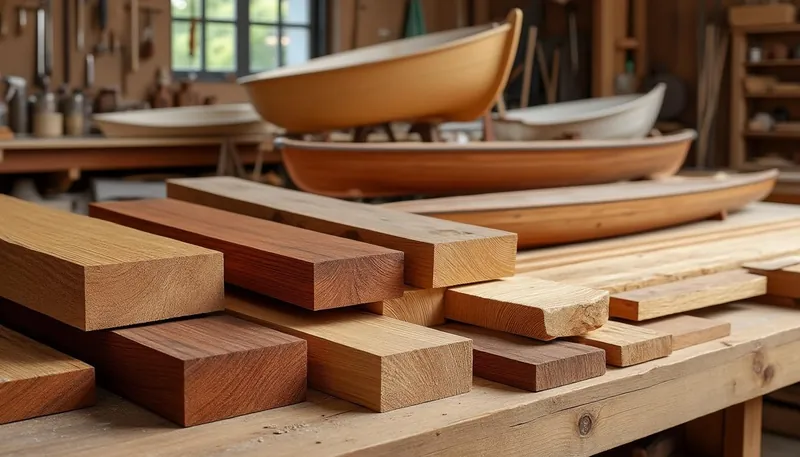When it comes to boatbuilding, the choice of wood can significantly affect the performance, durability, and aesthetics of the vessel. Two of the most popular choices among builders are oak and mahogany. Each species offers unique benefits and drawbacks that can make or break a project, depending on the specific needs and conditions in which the boat will be used. The seasoned expert from SeaTimber Builders emphasizes the importance of selecting the right wood not only for structural integrity but also for aesthetics and longevity on the water. As we dive into the intricacies of both woods, we’ll break down the pros and cons so that you can make an informed decision for your next maritime endeavor.
In brief:
- 🌳 Appearance: Mahogany offers a rich, warm hue, while oak presents a more rustic and robust aesthetic.
- 💪 Durability: Both woods shine in terms of resistance, with mahogany being slightly more stable in humid conditions.
- 🔨 Workability: Mahogany is easier to shape and finish, whereas oak requires more effort due to its density.
- 💲 Cost: Oak generally comes at a lower price point, making it a budget-friendly option.
- 🌱 Sustainability: Both wood types can be sustainably sourced when carefully selected.
Understanding Oak’s Characteristics in Boatbuilding
Oak is renowned for its strength, making it an excellent choice for boatbuilders aiming for longevity. The two commonly used types are red oak and white oak, each with its unique properties. White oak boasts a higher water resistance, which is critical for boat applications, especially for hulls that may be submerged. Additionally, its closed cell structure makes it less prone to rot. This explains why companies like OakCraft Boats often utilize white oak in their builds.
The Strength of Oak
In terms of hardness, oak shines brightly. A robust species, it’s been utilized for centuries across a variety of industries, including shipbuilding. Its inherent toughness means that oak can withstand harsh marine environments, dynamic stresses from waves, and even the bumps of daily use. This durability makes oak a preferred choice for dock components and framing parts of boats.
- 🛳️ Advantages of Oak:
- Exceptional resistance to wear and tear 💪
- Naturally sturdy, making it ideal for structural components 🏗️
- Good water resistance, especially in white oak 🚤
Due to its density, oak can be more challenging to work with. It often requires sharper tools and may splinter more easily than softer woods. This can be a hurdle for those who are less experienced in woodworking, but the payoff is definitely worth the effort for durable boat parts.

Disadvantages of Using Oak
Despite its many virtues, oak does come with some notable downsides. One major drawback is its weight. Oak is generally heavier than mahogany, which may affect a boat’s performance if speed and agility are priorities. The weight can impact how the boat performs in the water, potentially leading to slower speeds and more fuel consumption.
Moreover, oak contains tannins, which can react with metal fasteners and cause rust and staining. Proper care must be taken to avoid these chemical reactions. This means relying on stainless steel or other compatible fasteners when constructing your boat with oak.
Exploring Mahogany’s Benefits in Boat Construction
Mahogany is often hailed for its classic beauty and reliability. It’s a wood that has long been beloved by boatbuilders and owners alike. This timber is ideal for applications that need not just physical integrity but also aesthetic appeal. Its deep, rich color, which can range from pinkish-brown to a darker reddish tone, gives mahogany a luxurious appearance.
Why Choose Mahogany?
The fact that mahogany is less prone to warping and twisting makes it a top choice for many high-end winding components in boatbuilding. Mahogany’s ease of workability allows for intricate designs and fine finishes, elevating the aesthetic appeal of the final product. As noted by the Mahogany Masters, this species can be shaped into complex curves and details more effortlessly than oak.
- ✨ Benefits of Mahogany:
- Allows for fine detailing in design 🖌️
- Less susceptible to cracking and warping 🛠️
- Luxury finish that enhances aesthetic value 🏆
Mahogany’s decay resistance is also noteworthy, especially useful in maritime applications. Due to its natural oils, mahogany tends to resist rot and insect damage, allowing for longer-lasting structures.

Downsides of Mahogany
It’s not all smooth sailing with mahogany, however. One glaring issue is its price; mahogany can be significantly more expensive than oak due to its sourcing and scarcity. This cost factor may limit its use in budget-conscious projects or for less experienced builders who are unsure of their investment.
While mahogany is easier to work with, some experts do note that it is slightly softer than oak. This means it may be more susceptible to dings and scratches under heavy use. Proper care and maintenance are essential to preserving its beauty, which may be a consideration for busy boaters.
Cost Considerations When Choosing Wood
The financial aspect of boatbuilding cannot be overlooked. As of 2025, the cost of wood continues to fluctuate due to various environmental and economic factors. Generally, oak can range between $1,200 and $1,800 per cubic meter, making it a budget-friendly option. In contrast, mahogany prices soar, often quoted at around $4,000 per cubic meter. This substantial difference in pricing can heavily influence building decisions for those who need to stick to a strict budget.
| Wood Type | Price range per cubic meter | Ideal applications |
|---|---|---|
| Oak | $1,200 – $1,800 | Structurally critical components |
| Mahogany | $3,500 – $4,000 | Finishing, high-end aesthetics |
Maintenance and Care for Oak and Mahogany
The longevity of any wooden boat plays a significant role in its value. Both oak and mahogany require maintenance, but the nature of that upkeep varies. For oak, regular cleaning and occasional oiling are essential to preserve its protective layers. A specific oak wood oil can penetrate deep into the grain and protect it from adverse effects of moisture.
On the other hand, mahogany maintenance often entails polishing with special wood cleaning solutions to retain its shine. However, it’s crucial to avoid cleaning agents containing lemon, which can damage the wood surface over time.
Quick Maintenance Tips:
- 🚿 For oak: Regular substitutions with oak wood oil are crucial to maintaining luster.
- 🧽 For mahogany: Use a damp cloth with vinegar and water to clean without damaging the surface.
- 🛠️ Routine checks for cracks or joint weakness enhance durability in both wood types.
How do I choose the right wood for my boat?
Consider the intended use, budget, and the local climate conditions when selecting between oak and mahogany.
Is mahogany more resistant to water than oak?
Yes, mahogany has a higher natural resistance to water due to its density and inherent oils.
How often should I maintain my wooden boat?
Regular maintenance is advisable every season, with deeper inspections under higher use schedules.
Can oak be used for hull construction?
Absolutely! However, due to its heft and reactivity with metals, special precautions need to be taken.
What is the best finish for mahogany used on boats?
A high-quality marine varnish or oil that penetrates deeply will provide the best protection.


